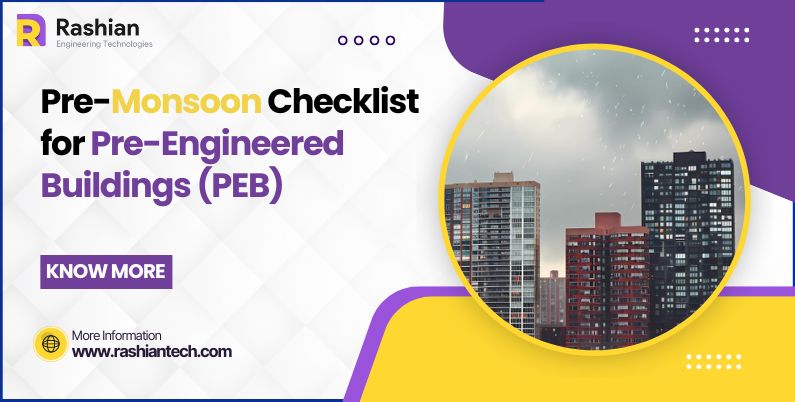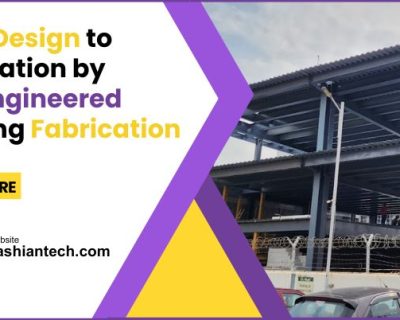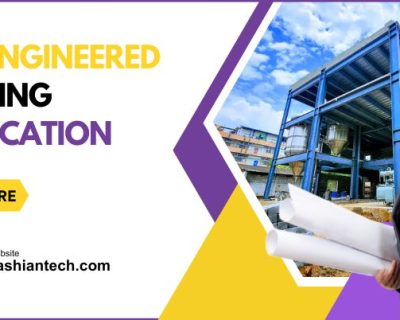Blog

Pre-Monsoon Checklist for Pre-Engineered Buildings (PEB)
As the monsoon season approaches, ensuring that your Pre-Engineered Building (PEB) is ready to withstand heavy rains, high winds, and fluctuating temperatures becomes crucial. Proper maintenance and preparation not only extend the lifespan of your structure but also prevent costly repairs and operational disruptions. Here’s a comprehensive Pre-Monsoon Checklist for Pre-Engineered Buildings (PEB) to maintain in optimal condition.
- Inspect the Roofing System
The roof is the first line of defence against the elements, making its inspection a top priority.
- Check for Leaks: Inspect the entire roof surface for signs of leaks, especially around joints, seams, and penetrations like vents and skylights.
- Examine Fasteners: Ensure all bolts, screws, and other fasteners are secure and haven’t rusted or corroded.
- Clean Gutters and Downspouts: Remove any debris from gutters and downspouts to prevent water accumulation and potential damage.
- Assess Structural Integrity
A thorough inspection of the structural components is necessary to identify any weaknesses.
- Check for Corrosion: Inspect steel frames and columns for signs of rust or corrosion, particularly in areas that are often exposed to moisture.
- Examine Connections: Ensure that all connections, such as bolts and welds, are intact and free from signs of wear and tear.
- Evaluate Wall Panels: Look for any warping, dents, or gaps in the wall panels that could allow water ingress.
- Seal Openings and Gaps
Water can easily seep into your building through gaps and openings, leading to interior damage.
- Doors and Windows: Check seals around doors and windows to ensure they are intact and replace any damaged weather stripping.
- Expansion Joints: Inspect expansion joints for any signs of deterioration and ensure they are properly sealed.
- Caulking: Reapply caulking around areas where different materials meet, such as metal to masonry, to prevent water penetration.
- Examine the Drainage System
An effective drainage system is crucial to prevent water buildup around your building.
- Site Grading: Ensure the ground around the building slopes away from the foundation to direct water flow away from the structure.
- Drainage Channels: Clear any drainage channels of debris to ensure they can efficiently carry water away from the building.
- Check Sumps and Pumps: If your building has a sump pump system, test it to ensure it’s functioning correctly and capable of handling increased water flow during the monsoon.
- HVAC System Maintenance
Your HVAC system needs to be in top condition to handle the humid and wet conditions of the monsoon.
- Air Filters: Replace or clean air filters to maintain proper airflow and indoor air quality.
- Ducts and Vents: Inspect ducts and vents for any blockages or leaks that could affect the efficiency of the system.
- Condensate Drains: Ensure that condensate drains are clear and functioning to prevent water damage from overflow.
- Electrical System Inspection
Moisture can wreak havoc on electrical systems, so it’s essential to ensure they are properly protected.
- Wiring and Insulation: Check all wiring and insulation for signs of wear, damage, or exposure to moisture.
- Panel Boxes: Inspect panel boxes to ensure they are sealed and protected from water ingress.
- Backup Power Systems: Test backup generators or power systems to ensure they are ready for use in case of power outages.
- Prepare for Emergency Situations
Being prepared for emergencies is essential during the monsoon season.
- Emergency Kits: Ensure that emergency kits, including first aid supplies and flashlights, are accessible and fully stocked.
- Evacuation Plans: Review and update evacuation plans with your team to ensure everyone knows what to do in case of an emergency.
- Communication: Establish clear communication channels to quickly disseminate information during adverse weather conditions.
- Document and Record
Keeping a detailed record of your pre-monsoon inspection and maintenance activities is vital.
- Inspection Reports: Document all findings during inspections, including any repairs or maintenance performed.
- Photographic Evidence: Take photographs of critical areas, especially where issues are found, for future reference.
- Follow-Up Schedule: Set a follow-up schedule for any identified issues that require monitoring or further attention.
Conclusion
Proactively addressing potential issues with your Pre-Engineered Building before the monsoon arrives can save you from significant problems down the line. By following this Pre-Monsoon Checklist for Pre-Engineered Buildings (PEB), you can ensure that your PEB remains safe, functional, and ready to face the challenges of the rainy season. Regular maintenance not only protects your investment but also provides peace of mind, knowing that your building is well-prepared for whatever the weather may bring.
At Rashian Technologies, we understand the importance of safeguarding your PEB against harsh weather conditions. Our expert team is dedicated to providing top-tier maintenance, inspection, and repair services to ensure your building’s longevity and performance and Pre-Monsoon Checklist for Pre-Engineered Buildings (PEB). With our customized solutions and attention to detail, we help you mitigate risks and keep your operations running smoothly, even during the most challenging monsoon months. Trust Rashian Technologies to keep your Pre-Engineered Building in peak condition, rain or shine.
FAQ
- Why is a pre-monsoon inspection necessary for PEBs?
- Pre-monsoon inspections help identify and address potential issues like leaks, structural weaknesses, and drainage problems before heavy rains begin. This proactive approach prevents costly repairs and ensures the building remains safe and operational during the monsoon season.
- What are the key areas to inspect before the monsoon?
- The critical areas to inspect include the roofing system, structural integrity, openings and gaps, drainage systems, HVAC systems, and electrical components. Ensuring these are in good condition can prevent water damage and operational disruptions.
- How often should pre-monsoon maintenance be performed?
- Pre-monsoon maintenance should be conducted annually, ideally a few weeks before the start of the rainy season. Regular yearly maintenance helps maintain the building’s overall health and functionality.
- What should I do if I find corrosion on the steel frames?
- If corrosion is found, it’s important to address it immediately. Minor corrosion can often be treated with anti-corrosion coatings, while more severe cases might require replacing affected parts. Consulting with a professional is recommended to assess the extent of the damage.
- Can I handle the pre-monsoon inspection myself, or should I hire a professional?
- While basic checks like cleaning gutters and checking for visible leaks can be done by the building owner, a professional inspection is recommended. Professionals have the expertise to identify less obvious issues and ensure all aspects of the building are thoroughly evaluated.
- How can Rashian Technologies assist with pre-monsoon preparations?
- Rashian Technologies offers comprehensive maintenance, inspection, and repair services tailored to Pre-Engineered Buildings. Our team ensures your PEB is well-prepared to handle the monsoon, providing you with peace of mind and protection against potential weather-related damages.
- What should be done if leaks are detected during the inspection?
- If leaks are detected, it’s important to address them immediately. Start by sealing the leaks with appropriate materials like sealants or waterproofing membranes. For significant leaks, consider consulting a professional to assess the damage and perform necessary repairs to prevent further issues.
- How do I ensure that my drainage system is effective during heavy rains?
- Ensure that gutters, downspouts, and drainage channels are free of debris and properly directed away from the building. Regularly check the grading around the foundation to ensure water flows away from the structure. If you have a sump pump system, test it before the monsoon to confirm it’s functioning correctly.
- What are the risks of neglecting pre-monsoon maintenance for PEBs?
- Neglecting pre-monsoon maintenance can lead to serious problems like water damage, structural weakening, corrosion, electrical failures, and operational downtime. These issues not only compromise the safety of the building but also result in costly repairs and potential business disruptions.
- How can I protect my PEB’s electrical system during the monsoon?
- Protecting your PEB’s electrical system involves inspecting and sealing panel boxes, checking wiring insulation, and ensuring that backup power systems are operational. Keeping electrical components dry and shielded from moisture is essential to prevent short circuits and power outages.
- What specific products or materials should I use for sealing gaps and openings?
- Use high-quality, weather-resistant sealants, caulking, and weather stripping to seal gaps and openings. Choose products that are specifically designed for outdoor use and can withstand exposure to water, UV rays, and temperature fluctuations.
- What role does HVAC maintenance play in pre-monsoon preparation?
- HVAC maintenance is crucial for maintaining indoor air quality and ensuring the system operates efficiently during the humid monsoon season. Cleaning or replacing air filters, checking ducts and vents, and ensuring condensate drains are clear can prevent issues like mold growth, reduced air quality, and system failures.
- How can I monitor my PEB’s condition during the monsoon?
- Regularly inspect the building during the monsoon season, especially after heavy rains. Look for signs of water ingress, check the roof and drainage systems, and monitor the interior for any moisture-related issues. Document any changes or concerns and address them promptly.
- What should be included in an emergency plan for monsoon-related issues?
- An emergency plan should include evacuation routes, contact information for emergency services, procedures for shutting down electrical and mechanical systems, and communication protocols for staff. Ensure that all team members are familiar with the plan and have access to emergency kits.
- Why should I choose Rashian Technologies for my pre-monsoon PEB maintenance?
- Rashian Technologies offers expert services tailored to the specific needs of Pre-Engineered Buildings. Our team provides thorough inspections, effective maintenance, and prompt repairs, ensuring your building is well-protected against monsoon challenges. We focus on delivering reliable solutions that keep your operations running smoothly, even during the toughest weather conditions.Top of Form





12 comments on “Pre-Monsoon Checklist for Pre-Engineered Buildings (PEB)”
Comments are closed